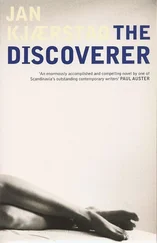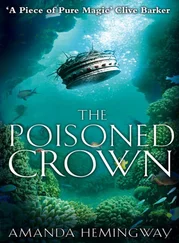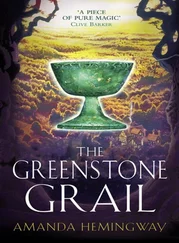The truly outrageous thing about the Hamsun programme, a direct consequence of those paradoxical interludes, was Jonas Wergeland’s suggestion that there might be another way of interpreting a person’s character. What Jonas did, you see, as the old writer — in the shape of Normann Vaage — sat there in his dark pinstripe suit, with the NS badge in his buttonhole and one hand on his cane, was to have him undergo a metamorphosis, one which in many ways followed the same shifts that can be detected in Hamsun’s works. Viewers compared this to the ‘heads-bodies-legs’ pictures of their childhood, or with twisting the end of a kaleidoscope, since some parts of the picture remained the same in each frame, while at the same time the picture as a whole changed. By dint of trick photography, and with the help of NRK’s excellent props department, which played a vital part in the Thinking Big series, Normann Vaage’s clothes and makeup changed from one instant to the next in such a way that he not only portrayed all of Hamsun’s many occupations and roles in life — shop assistant, actor, vagabond, road worker, gambler, tram conductor, farmer — but also the characters from Hamsun’s books. So while Hamsun was sitting there talking to Hitler, in between the panorama shots of northern Norway viewers saw him switch identity, becoming by turns the first-person narrator of Hunger , much as he had looked in Per Oscarsson’s rendering, Lieutenant Glahn, Johannes, the miller’s son, Benoni, Tobias Holmengraa from Segelfoss Town , Isak Sellenrå, August or Abel Brodersen from The Ring is Closed in a brown Ulster with his tie all askew. But first and last he was seen as Johan Nilsen Nagel from Mysteries , with his yellow suit and violin case, the most incomprehensible and bizarre of all Hamsun’s characters. Jonas also had Hitler undergo a slow transformation from the Führer, in a double-breasted grey jacket to the humpbacked manikin, the Minute, thus leaving one with a suspicion that there was talk here of a meeting, outside of time and space, between the visionary and his demon.
For Jonas, this meeting with Hitler illustrated what lay at the very heart of Hamsun’s work: the ambiguity, the juggling with lies that turn out to be true, and truths that turn out to be lies. And, not least, it illustrated Hamsun’s greatest achievement: his vision of the complexity of the human consciousness. After all, how was it possible: to be so stubborn, to fight for what one knows to be a lost cause, to do something as monstrous as shake the hand of the very Devil? By and large, Jonas detected a distinct resemblance between Hamsun and his fictional characters, almost all of whom lacked consistency, who refused to be pigeonholed by such terms as ‘identity’ or ‘set personality’; on the contrary, they were unpredictable, they could set the world on fire one day and retire to a mountaintop to meditate the next. They were many. And many people at once.
While working on the series, Jonas Wergeland became almost obsessed with Hamsun, since it seemed that through Hamsun he had been brought face to face with a problem with which he had been battling all his life, one that Gabriel Sand had put him on the track of in the saloon of an old lifeboat, with his mention of ‘his good friend’ Niels Bohr and the latter’s lecture in Como. For both Hamsun himself and his characters were as much of a puzzle as light: that agency which the physicists of the twentieth century had spent so much time and energy in studying and which they believed to take the form of particles one moment and waves the next. Thus, in Hamsun’s case, Jonas Wergeland felt moved to make some reference to Niels Bohr and the concept of complementarity: an obscure concept but one which hinted, nonetheless, that there were two sides to a story — two mutually exclusive aspects, both of which might nonetheless be necessary in order to arrive at a full understanding of the phenomenon. In other words, where the particle and wave properties of light were concerned, it was a matter of looking at light in two different ways at once . And of breaking out of an ingrained and rigid mindset.
This proved to be Jonas’s key to Hamsun. The writer showed him what a little way we have come in terms of understanding a man, or how the pieces of a life fit together. In studying Hamsun, Jonas discovered how dangerous it could be to hang onto some time-honoured psychological theory, to saddle an individual with an identity, a persona, an essence: and equally dangerous to cherish the belief that there has to be some sort of continuity, a thread running through life, as if without this comfort one were liable to become lost in a maze. Such notions prevented one from imagining that there could also be leaps, that there could be interruptions in a life, that it might not hang together at all, at any rate not in the way one thought. So it was with Hamsun. It was only when one held him transfixed, in a still shot, so to speak, that he became either a Nazi sympathizer or the great writer. But Hamsun was both at the same time and something more, something you could never quite put your finger on; and it was this, this great and unsettling enigma, which so few Norwegians seemed able to come to terms with. In the presence of Adolf Hitler, Norway’s worst enemy, Hamsun set out to plead Norway’s cause, tried to do something for Norway, for the people of Norway: a moral endeavour in the midst of immorality, good and evil merging into one. If one is to gain any insight into a man like Hamsun, it is necessary, as Niels Bohr demonstrated in his field, to forsake classic perceptions and plain language. Anyone who says he can think about Hamsun without his head spinning is simply giving away the fact that he has not understood the first thing about Hamsun. It is paradoxical — but also very comforting — that an author, a wordsmith, should constitute a mystery that defies description.
And yet this is exactly what Hamsun’s books are all about: writing the impossible. And it was this that inspired Jonas Wergeland to attempt something similar in his television programme, primarily by introducing an element of undermining, ironic distance to the scene in which Hamsun shook hands with Hitler, and in which Wergeland conveyed both Hamsun’s awe at actually being there in the lion’s den and, with equal force, his knowledge that this was a repellent and monstrous act. One could say that, by dint of its thoroughgoing ambivalence, this programme — one illusion meeting another illusion, two visionaries talking at cross-purposes — dealt as much with the way in which this entire tableau presented a challenge to the creative faculty, that basic element of human life; it dealt, in other words, with something that went beyond all talk, all demands, with a simple message. Consequently, this creative effort on the part of the mind itself became one of the key elements in the programme: that mind with which one perceives, that mind from which spring dreams and illusions and, hence, literature. As much as being a programme about Hamsun, this was a programme about an attempt to stretch the imagination far enough to accommodate this disquieting man by the name of Knut Hamsun. Or, to put it another way: it was about our need for stories. At heart, the whole programme questioned the viewers’ ability to create fantasies, and what part such fantasies — as, for example, those brought into service in understanding a situation as impossible as Hamsun’s meeting with Hitler — actually play in our lives. Hence the reason that this programme with its almost indescribable subject matter — an old man and a tyrant by a panorama window — had a particularly strange effect on the viewers. Everyone enjoyed it, everyone was profoundly intrigued by it, but no one could say exactly why.
Читать дальше












